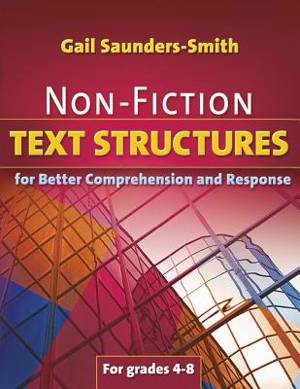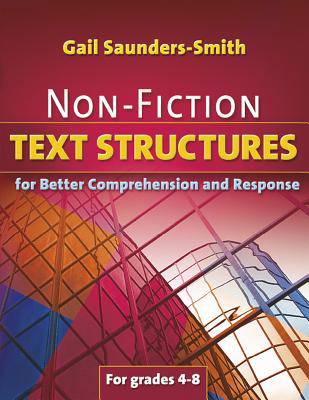
- Afhalen na 1 uur in een winkel met voorraad
- Gratis thuislevering in België vanaf € 30
- Ruim aanbod met 7 miljoen producten
- Afhalen na 1 uur in een winkel met voorraad
- Gratis thuislevering in België vanaf € 30
- Ruim aanbod met 7 miljoen producten
Zoeken
Non-Fiction Text Structures for Better Comprehension and Response
Gail Saunders-Smith
€ 33,45
+ 66 punten
Omschrijving
Non-fiction text structures organize information into comprehensible patterns. Knowing how to recognize and use these structures to navigate non-fiction text greatly improves students' understanding of what they read. Gail Saunders-Smith simplifies the process by providing teachers of grades 4-8 with: ways to teach each of the five non-fiction text structures: compare/contrast, cause/effect, sequence/procedure, question/answer, and exemplification; engaging whole-class and small-group activities using written, verbal, image, three-dimensional, and technology responses; study skills for locating, recording, and using information; tools for assessing student understanding, and explanations of the text features that organize information within the text structures; and mini-lessons for whole-class, small-group, and independent application of students' text structure knowledge. Examples, photographs, student samples, and graphic organizers support your teaching, and a bibliography of professional books and resources for locating leveled non-fiction texts make this a complete, ready-to-use guide for improving student comprehension.
Specificaties
Betrokkenen
- Auteur(s):
- Uitgeverij:
Inhoud
- Aantal bladzijden:
- 128
- Taal:
- Engels
- Reeks:
Eigenschappen
- Productcode (EAN):
- 9781934338384
- Verschijningsdatum:
- 1/08/2009
- Uitvoering:
- Paperback
- Formaat:
- Trade paperback (VS)
- Afmetingen:
- 213 mm x 277 mm
- Gewicht:
- 317 g

Alleen bij Standaard Boekhandel
+ 66 punten op je klantenkaart van Standaard Boekhandel
Beoordelingen
We publiceren alleen reviews die voldoen aan de voorwaarden voor reviews. Bekijk onze voorwaarden voor reviews.








